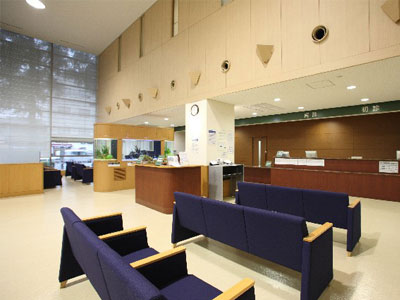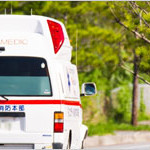Japanese people take illness very seriously and are much more willing to take a trip to the doctors over something as common as a cold or flu compared to other countries. They are also very cautious about contagious illnesses and viruses, which is why you will see many Japanese people walking down the street wearing surgical masks during the colder seasons. It is socially expected for a sick person to go to the doctors to get medicine rather than nursing themselves at home without consulting the doctor. One reason for this might be due to over-the-counter medicine in Japan being weaker than their overseas equivalent, which means that people need to go to the doctors for stronger medicine if it doesn't work.
It is well worth finding out how the Japanese healthcare system works before something happens. However, this is more than just knowing what to do when you get to the doctors—this section covers the basics on taking care of yourself from all sides.
—Medical Care
—Medicine
—Dentists
—Insurance
—Pensions
Medical Care

The Japanese Healthcare System
There are two kinds of medical facilities in Japan: clinics (クリニック kurinikku) and hospitals (病院 byoin). Confusingly, both of these can be commonly called 'byoin' (hospital) in Japanese, but the latter is also known as 大きい病院 'ookii byoin' (big hospital) to distinguish between the two.
Clinics (also known as doctor's surgeries in the west) are for primary care purposes and where you should normally go unless you have an emergency. Hospitals are reserved for more serious cases that require inpatient treatments. They do also have outpatient facilities but you may only be able to use these if you have a referral from your clinic.
To make matters more complicated, Japan does not have a 'one-type-fits-all' General Practitioner like in some western countries; instead, they have different clinics for each specialised department of medicine. This means that if you have a bad cough you will need to go to a 'naika' (internal medicine clinic) or go to a 'hifuka' (skin doctor) if you have a mysterious rash. Local clinics are typically run by only one or two doctors who have been trained in certain specialties, so if you go to the wrong type of clinic you may find the doctor won't be able to help you. The doctor's main specialty will typically be included in the name of the clinic itself (e.g. Tanaka naika kurinikku= Tanaka Internal Medicine Clinic) and will also list their secondary areas on a sign outside, albeit in Japanese. The closest thing to a GP in Japan is a 'naika', so if in doubt this is the best place to go.
Common types of doctor's clinics you may need:
内科 naika — Internal medicine
外科 geka — Surgery
皮膚科 hifuka — Dermatologists
婦人科 fujinka — Gynecologists
婦人産科 fujinsanka — Ob/Gyn
耳鼻咽喉科 jibiinkoka (abbr. 耳鼻科 jibika) — ENT (Ears-Nose-Throat) department
小児科 shounika — Pediatrics
It is also important to note that many doctors and nurses do not speak English, especially those outside major cities. It's a good idea to get a Japanese-speaking friend to come with you on your trip, otherwise you may have problems accurately describing your symptoms and understanding the doctor's diagnosis. You could check with your municipal city office to see if they have a list of English-speaking medical facilities in your area or any healthcare publications that might have useful English contacts.
What to bring to the doctors
—A form of photo ID (passport or Foreign Residence Card)
—Your insurance card (see 'Insurance' section below)
—Your clinic's health card (if you have been there before)
—Cash (to pay for your appointment/medicine)
What to expect from a visit to the doctors
The good thing about the Japanese system is that you can walk in without an appointment. When you visit a particular clinic, you will first have to go to the counter and ask to see the doctor. The nurse will ask you if it your first time with them, and if so you will have to fill out a medical form and possibly show them ID. Registration forms may not be available in English, so again it is a good idea to have someone come with you who can read Japanese. They will ask you about your personal details, your symptoms, your history of illnesses as well as those of your family.
When you hand in this form the nurse may also ask you to take your temperature with a thermometer, which you put under your armpit until it beeps. It is a common perception in Japan that non-Japanese normally have higher body temperatures than Japanese people, so they will ask you what your normal temperature is.
After you are called in by the doctor, they will ask you what your symptoms are and how long you've had them. However, unlike in many other countries, it is common practice in Japan for doctors to ask you what you think your illness might be and also ask you what treatment/medicine you would like.
After your appointment you must go back to the counter and give the nurse your medicine note (if the doctor gave you one). You must wait until you've been called and then you will pay for your appointment and medicine.
Medicine (薬 kusuri)
Collecting Your Medicine
As mentioned before, doctors in Japan typically ask the patient what medicine they would like for their treatment rather than telling them what to take. Japanese medicine typically treats just one symptom, so you would need separate forms of medicine for each symptom you want to have treated. Medicine also comes in various different forms, from pills to skin patches to 'gurgling' medicine.
Some clinics have the facilities to dispense medicine in-house, while others will have a relationship with a nearby pharmacy. If the latter, the nurse will give you a form to take to the pharmacy counter where they will dispense your medicine.
Importing Medicine From Overseas
Japanese laws on importing medicine are very strict and it is crucial you go through the proper channel's when doing so. Unbeknownst to many a tourist, certain medicines (prescribed or otherwise) that are common abroad are completely illegal to import regardless of what they are needed for. This can include inhalers, some allergy medicines, and common remedies such as Vick's vaporub. It is best if you check on your embassy's website for a list of illegal medications if this affects you.
Visitors to Japan are permitted to bring their non-prohibited prescription medicine in the following circumstances: 1) the medication is under one month's supply; and 2) the visitor can present a copy of their prescription note and also a doctor's note detailing the reasons for the medication to Customs. If the amount exceeds one month's supply the visitor must obtain a 'Yakkan Shomei' import permit in advance and present it to Customs on arrival.
For more information on importing medicine: click here.
Dentists (歯科 shika)
As dentistry is considered a standard part of healthcare in Japan, dental clinics ('shika kurinikku') are run very much like doctor's clinics: they are generally small, private, family-run clinics; they have separate morning and afternoon sessions and are closed at lunch; and they are covered by the same health insurance schemes (more on that below). Again, staff may not be proficient in English (although most doctors/dentists tend to know English medical terminology), so it is a good idea to bring a Japanese speaker with you to help you in your appointment and to fill out forms.
It is also worth noting that unlike doctor's clinics you generally have to book an appointment in advance unless it's for an emergency. It is also common to have follow up appointments rather than having your whole treatment in one sitting.
Insurance
Health Insurance Schemes
There are two types of health insurance schemes in Japan: Employees' Health Insurance (健康保険 kenko hoken) and National Health Insurance (国民健康保険 kokumin kenko hoken). It is compulsory for anyone staying in Japan for a duration of over three months to sign up to one of these schemes.
Employees' Health Insurance (EHI)—For residents who work for a company with 5 or more employees. The company must provide this insurance cover as part of the employee's working benefits package. Dependents can also apply for coverage providing they are part of the employee's immediate family and are financially dependent on them. The employer pays for half of the insurance contributions and is also responsible for paying the other half (the employee's contribution) from their pay.
National Health Insurance (NHI)—Residents who are not eligible to enroll under the Employee's Health Insurance scheme (including self-employed and free-lance workers) must sign up for NHI. Insured members pay a premium NHI contribution through tax.
*Private insurance is also available, but residents must be enrolled onto one of the two systems above (usually NHI) even if they take it out.
Benefits
Members covered by NHI are entitled to highly subsidised medical care: you will only have to pay 30% of the cost for doctor appointments, prescription medicine and dental care, while the other 70% is paid by NHI.
Insured members are also able to claim for partial reimbursement for medical treatment should they be hospitalised and the fees exceed their personal threshold (based on income). Other benefits also include partially subsidised hospital meals, childbirth benefits, and a 90% reimbursement for hospital apparatus (e.g. crutches) and health-based treatments (e.g. massage therapy, acupuncture).
Note that insured members cannot be reimbursed for non-health related issues such as cosmetic dental work (e.g. teeth whitening, braces) or treatments without a doctors note (e.g. massages).
For more information on Employees' Health Insurance: click here [external link]
For more information on National Health Insurance: click here [external link]
Pensions
As with health insurance, there are two forms of pension schemes: Employees' Pension Insurance scheme (kosei nenkin) and National Pension scheme (kokumin nenkin). In either scheme you will be entitled to claim your pension back once you've reached the age of 65.
Employees' Pension Insurance—For employees of private corporations, members of this work-based scheme are also automatically enrolled in the National Pension system and must contribute to both. The long-term benefit of this is employees get a larger payout when they retire (or become disabled) than people who are only on the national pension.
National Pension—This pension scheme is for all residents of Japan, regardless of whether they are part of an employment-based pension or not. Residents must enroll at their municipal city office and pay their contributions at the bank, post office or convenience store.
Foreign residents (those who do not hold Japanese nationality) are able to claim back their pension contributions as a lump-sum if they permanently leave Japan. To do this you must download a form (dattai ichijikin) and send it back with your pension book within two years after departure. You must have contributed for at least 6 months to be eligible to do this.
For more information, please refer to the Japan Pension Service website:
Employees' Pension Insurance system [external link]
National Pension system [external link]
Our tips:
1) Find out where your closest clinics are for each specialisation ('naika' for colds, 'hifuka' for skin problems etc.) Do this when you first move to Japan or a new area so you don't have to worry about it when you're sick.
2) Don't forget your insurance card—it gives you a 70% discount on your treatment!
3) Bring a Japanese-speaking friend with you to help you communicate and fill out medical/registration forms.
4) If you are going alone, it is a good idea to find out what your symptoms are called in Japanese and write these down to show the doctor (in roman letters is fine). It's also a good idea to look up some vocabulary related your problem.
However, we do not take responsibility should there be any inaccuracies or incorrect information shown.
Please use your own judgement about what you read here – From the organisers of japanbizguide.com website.





